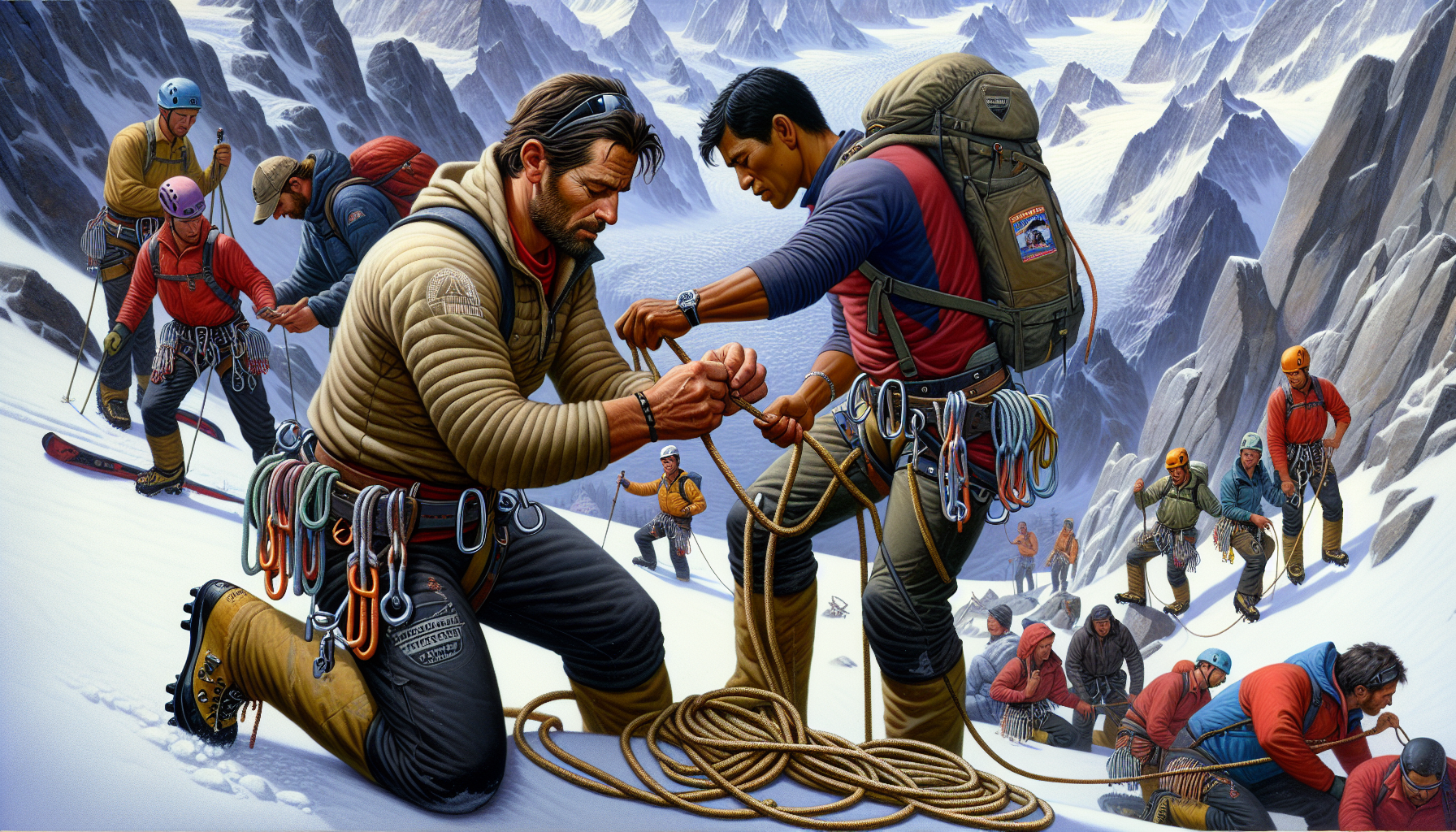
A typical day for a mountain guide starts long before the climb begins. It includes preparing for the journey by assessing the climbers’ skills and understanding their physical and mental readiness. Guides often conduct safety briefings, discussing potential hazards they might encounter. Whether it’s glacial crevasses, sudden weather changes, or rockfall, understanding these risks is fundamental. Guides are trained to read the environment, making real-time decisions that can mean the difference between a safe return and a perilous situation.
In addition to managing risks, mountain guides instill confidence in their climbers. They foster an atmosphere where individuals can push their limits while knowing they are supported by an experienced professional. This relationship not only enhances the climbing experience but also builds a trust that helps climbers perform better and navigate challenges more successfully.
Communication is another vital aspect of a mountain guide’s role. Clear instructions regarding climbing techniques and safety equipment usage are essential. Guides often use a combination of verbal communication and physical demonstrations, ensuring that climbers feel comfortable with skills like belaying or using crampons. The effectiveness of these interactions can significantly enhance climbers’ safety.
Ultimately, being a mountain guide means embracing responsibility. They are entrusted with the well-being of others on the ascent, requiring a deep knowledge of both the mountains and the climbers they support. Those who embark on the journey with a guide not only benefit from expertise but also gain a partner who is dedicated to keeping their climbing experience safe and meaningful.
Key Safety Skills And Training For Guides
Mountain guides undergo rigorous training that equips them with a diverse array of safety skills critical for managing the unpredictable challenges of high-altitude environments. This training often begins with foundational courses in wilderness first aid and advanced rescue techniques. Understanding how to respond in emergencies is key, from treating altitude sickness to performing crevasse rescues. For example, many guides become certified in CPR and wilderness medicine, enabling them to act swiftly when climbers are in distress.
Rescue skills are complemented by a deep understanding of climbing techniques. Guides are well-versed in the use of safety gear such as harnesses, ropes, and carabiners, which they utilize not only to secure themselves but also their clients. They might demonstrate how to set up a belay system or assess anchor points, ensuring climbers know the importance of gear checks before every ascent. This hands-on training helps climbers feel at ease while navigating challenging terrains.
Another critical aspect of their training involves risk assessment. Mountain guides must be adept at identifying potential hazards before they become life-threatening situations. This means constantly evaluating weather conditions, rock stability, and the physical state of the climbers under their care. For instance, a sudden shift in atmospheric pressure can signal an oncoming storm, and guides need to recognize these signs and make decisions that might involve altering the planned route or descending altogether. Such skills can literally save lives.
Additionally, mountain guides practice communication skills that enhance safety. They learn how to convey complex information in a relatable manner, making it easier for climbers to grasp critical safety protocols. This understanding fosters an environment where climbers feel empowered to voice concerns or ask questions, creating a dynamic of collaborative problem-solving amidst the challenges of climbing. Think of a guide explaining the nuances of foot placement on a steep section—a clear, concise explanation can prevent missteps that could lead to falls.
As the climbing community evolves, so too does the training for mountain guides. Innovations in technology and climbing gear necessitate ongoing education to keep pace with advancements. This commitment to lifelong learning not only hones their skills but also enhances climbers’ experiences, ensuring everyone involved is well-prepared for the journey ahead.
The Impact Of Guides On Climbers’ Success And Safety
Guides play a pivotal role in climbers’ journeys, often transforming daunting challenges into memorable accomplishments. Their presence not only enhances the overall experience but significantly elevates the chances of reaching summits safely. One of the most impactful ways guides contribute to climbers’ success is through their ability to assess real-time challenges and adapt strategies accordingly. For instance, a guide may notice that a climber is struggling with fatigue or is apprehensive about a particular section of the climb. In these moments, the guide can offer encouragement, adjust the pace, or suggest alternative routes that still allow for progress while keeping safety at the forefront.
The influence of mountain guides extends beyond merely navigating difficult terrain. They create a supportive environment where climbers learn to trust both their instincts and those of their guide. This trust is essential—when climbers feel secure, they are more likely to embrace the physical and mental demands of climbing. Whether it’s a steep ascent requiring technical skills or a challenging mental block during a difficult passage, guides provide the reassurance that climbers need to push through barriers. This shared journey fosters a sense of camaraderie that binds the team together, bolstering the overall climbing experience.
Furthermore, guides are adept at teaching climbers crucial skills that promote their independence and self-sufficiency while still prioritizing safety. For example, they often instruct climbers in navigation techniques, allowing them to interpret maps and use compasses effectively. With these skills, climbers gain not only confidence but also a deeper appreciation for the mountains. When climbers can actively participate in their journey, their sense of accomplishment grows, making the summit not just a goal but a shared victory.
The risks inherent in climbing cannot be overstated. From avalanches to equipment failures, the mountains can be unforgiving. Mountain guides frequently conduct drills and practice scenarios with their clients, preparing them for unexpected challenges. By simulating emergency situations, guides equip climbers with the knowledge and confidence needed to respond if a crisis arises. These practical sessions are not just theoretical; they prepare climbers for the adrenaline and pressures of real-life circumstances, enabling them to act decisively to ensure everyone’s safety.
A guide’s expertise also shines through in their approach to group dynamics. They understand that a cohesive team often leads to successful outcomes. By fostering collaboration among climbers, guides can balance individual strengths and weaknesses, optimizing how the group tackles obstacles. For example, pairing a more experienced climber with someone less seasoned can create a mentoring atmosphere, while also allowing the experienced climber to share their skills. Such strategies not only fortify safety but also amplify the success of the entire expedition.
Ultimately, the impact of mountain guides on climbers is profound. Their combination of technical knowledge, psychological insight, and interpersonal skills not only enhances safety but profoundly influences climbers’ experiences and achievements on the mountain. It’s a dynamic partnership, with guides guiding the way while climbers discover their strengths and capabilities amidst the challenges of nature.

